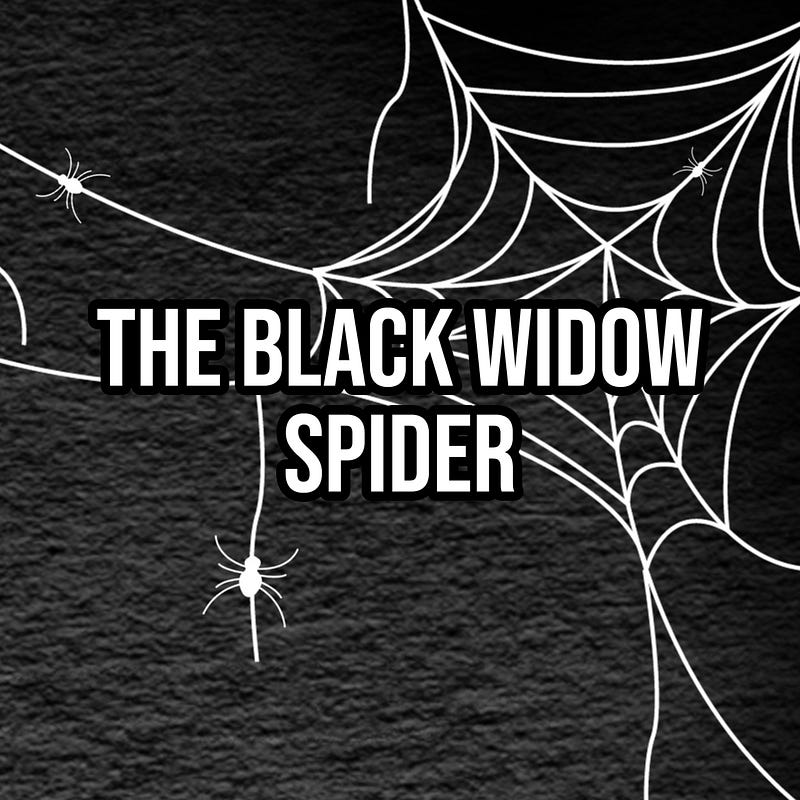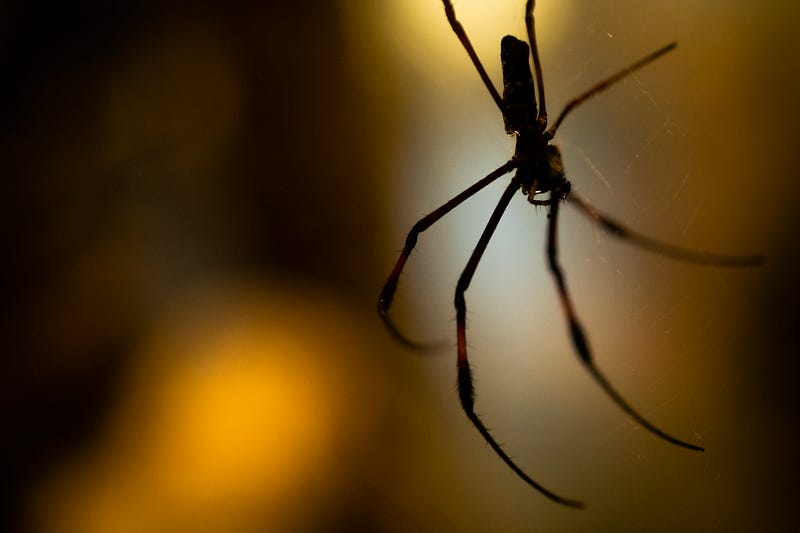The Intriguing World of the Black Widow Spider
Written on
Chapter 1: Introduction to the Black Widow Spider
The Black Widow Spider stands out as one of the few arachnids worldwide that can pose a serious threat to humans. Recognized for its striking dark hue and potent venom, this species is not only fascinating but also potentially dangerous. This article delves into the characteristics, behaviors, and ecological significance of the Black Widow, aiming to foster a greater understanding and appreciation for this extraordinary creature.
Scientific Classification
- Common Name: Black Widow Spider
- Binomial Name: Latrodectus
- Kingdom: Animalia
- Phylum: Arthropoda
- Subphylum: Chelicerata
- Class: Arachnida
- Order: Araneae
- Infraorder: Araneomorphae
- Family: Theridiidae
- Genus: Latrodectus
- Species: 32 known species

Chapter 2: Characteristics of the Black Widow
The Black Widow, scientifically known as Latrodectus, belongs to the highly venomous family Theridiidae. Approximately 32 species are recognized globally, including the Southern and Western varieties. Commonly referred to as the “Button Spider,” these arachnids are relatively small, averaging between 0.12 to 0.39 inches in length, with females sometimes reaching up to 0.51 inches.
Taxonomy and Historical Context
First documented by Charles Athanase Walkenaer in 1805, the profile of the Black Widow underwent significant revisions in 1959 by Herbert Walter Levi, who identified numerous anatomical variations among specimens worldwide. This research led to the identification of 32 distinct species found on every continent except Antarctica.
Coloration and Distinctions
As their name suggests, Black Widows are typically black, occasionally exhibiting dark brown shades. A distinctive reddish-orange hourglass marking usually appears on the underside of the abdomen. However, not all individuals display this hourglass, and some may have alternative markings. Males can be differentiated from females by their dorsal markings and smaller size, with males often exhibiting red or white patterns.
Behavioral Traits
Despite their fearsome reputation, Black Widows are generally shy and prefer to avoid human interaction. They exhibit aggression primarily towards insects, and their bites are a defense mechanism employed when they feel threatened. In many instances, humans and Black Widows can coexist peacefully if mutual respect is maintained.

How Strong is the Black Widow’s Silk?
Recent studies have revealed that the silk produced by Black Widow spiders possesses remarkable tensile strength, comparable to that of steel wire. This property has sparked interest in potential applications for military and law enforcement uniforms, where lightweight and durable materials could enhance protection.
Habitat and Global Distribution
Black Widows favor dark, undisturbed environments for nesting. They typically create webs in small crevices or natural holes close to the ground, often found in wood piles, barns, or garages. Their geographical distribution spans temperate regions worldwide, particularly in Southern and Western United States, where the climate is conducive to their survival.
The video "WILL IT BITE?! - Black Widow Challenge" explores the behavior and risks associated with Black Widow spiders, providing insights into their fascinating world.
Chapter 3: Diet and Ecological Role
The Black Widow's hunting strategy involves waiting in its web for unsuspecting prey. Their sticky silk entraps insects, allowing the spider to bite and inject venom before wrapping them for later consumption. Common prey includes flies, grasshoppers, and beetles. This predation plays a crucial role in maintaining ecological balance by controlling insect populations.
Natural Predators
Despite their reputation as formidable predators, Black Widows are not without threats. Natural enemies include wasps, centipedes, and larger insects, such as the Praying Mantis, which can easily overpower them.
The video "The Black Widow Spider: Everything You Need To Know!" provides a comprehensive overview of the Black Widow's behaviors, habitats, and risks.
Chapter 4: Reproduction and Lifespan
The name "Black Widow" originates from the female's tendency to consume the male after mating. This behavior, known as sexual cannibalism, is thought to provide nutritional benefits for gestation. Females lay around 220 eggs, which hatch after approximately 30 days. The survival rate for spiderlings is low due to cannibalism and other factors.
Lifespan
Males typically live only a few months, while females can survive up to three years under optimal conditions.
Venom and Its Effects
The Black Widow's venom, containing neurotoxins like latrotoxin, is among the most potent of any spider in North America. While bites can be painful and require medical attention, fatalities are rare. Symptoms can include muscle pain, nausea, and heart irregularities, necessitating prompt medical intervention.
Bite Prevention and Safety
Most bites occur when humans inadvertently disturb their habitats. To reduce the risk of bites, wearing gloves when handling potential nesting sites and inspecting shoes before wearing them are advisable.
Concluding Thoughts
The Black Widow Spider represents a captivating subject of study, blending beauty with danger. Continued research into their behavior and ecology promises to reveal even more about this remarkable arachnid in the future.
Works Cited
- “Poison Database.” Poison.org. Accessed: 3 September 2022.
- Slawson, Larry. “The Top 10 Deadliest and Most Dangerous Spiders in the World.” Owlcation. 2020.
- Soloway, Rose Ann Gould. “Black Widow Spider Bites Can Be Dangerous.” National Capital Poison Center, July 31, 2019.
- “Southern Black Widow Spider.” University of Florida. Accessed: 3 September 2022.